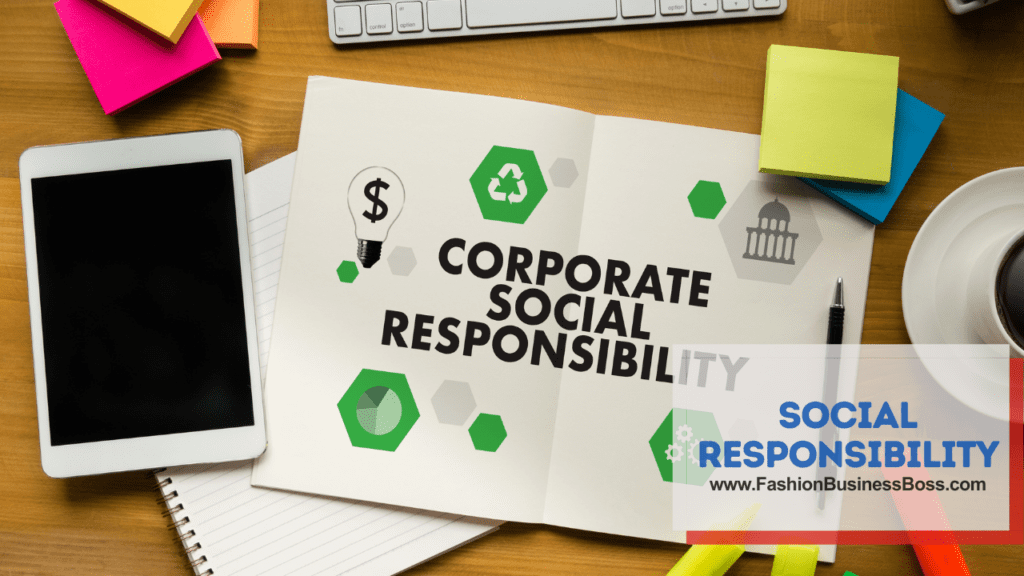Starting a clothing line can be an exciting and fulfilling venture, but it requires careful planning and strategy. One of the crucial steps in this journey is creating a solid business plan.
To create a clothing line business plan, strategize marketing and promotion, distribution channels and set up an e-commerce platform. Consider sustainability and risk factors to ensure a solid foundation for your fashion venture.
In this article, we’ll take you through the essential elements of a clothing line business plan, helping you turn your fashion dreams into a thriving reality.
Marketing and Promotion Strategies

Your branding strategy involves defining your brand identity, including elements like your logo, tagline, and brand colors. These elements serve as the visual and symbolic representation of your clothing line, conveying its essence and making it easily recognizable in the market. A strong brand identity is essential for setting your clothing line apart from competitors and establishing trust and familiarity with your intended audience.
Content marketing is a method that employs various content types, such as blog posts, videos, and social media, to connect with and educate your audience. By creating engaging and informative content, you can effectively communicate your brand’s narrative, values, and product offerings. This not only attracts potential customers but also fosters relationships and trust over time. Content marketing is a valuable tool for nurturing brand loyalty and ensuring that your clothing line remains visible to your target market.
Through thoughtful development of your branding strategy and the implementation of a well-structured content marketing plan, you can efficiently engage and connect with your audience in a clear and easily understandable manner.
Read more about:
Distribution Channels
If it aligns with your business model, you should outline your approach for collaborating with retail stores or boutiques to broaden your market reach. Retail partnerships involve establishing agreements with established physical stores to stock and sell your clothing line. This can be advantageous for reaching customers who prefer in-store shopping or those who frequent these retail locations.
Your e-commerce platform is the digital space where you’ll operate your online store. It’s essential to discuss your chosen platform, emphasizing its features and advantages. This platform serves as the virtual storefront for your clothing line, allowing customers to browse and purchase your products online. Features might include user-friendly navigation, secure payment options, and mobile responsiveness. By selecting an appropriate platform, you can provide a seamless and convenient online shopping experience, enhancing your brand’s accessibility to a broader audience.
By thoughtfully considering and planning your retail partnerships and e-commerce platform, you can expand the availability of your clothing line, making it accessible to a wider audience, both in physical retail spaces and the digital realm.
Sustainability and Ethical Practices
This involves the adoption of sustainable practices within your clothing line’s operations. These practices may include the use of eco-friendly materials in your clothing production or the implementation of ethical manufacturing processes. Eco-friendly materials are those that have a lower impact on the environment, such as organic cotton or recycled fabrics. Ethical manufacturing processes ensure that production methods prioritize the well-being of workers and minimize harm to the environment. By incorporating these practices, your clothing line can reduce its ecological footprint and contribute positively to environmental preservation.
Ethical sourcing entails the assurance of ethical and fair practices throughout your supply chain. This means detailing how you guarantee the ethical procurement of materials and fair labor practices in the production of your clothing. Ethical sourcing ensures that the individuals involved in the production process are treated fairly and justly. It involves transparency in sourcing materials, verifying that suppliers adhere to ethical standards, and monitoring labor conditions. By prioritizing ethical sourcing, you demonstrate a commitment to social responsibility and uphold ethical values in your clothing line’s production, fostering trust among consumers.
Risk Analysis

This phase necessitates the identification of potential risks and challenges that your clothing line might encounter during its operations. It involves a systematic examination of internal and external factors that could have adverse effects on your business. Potential risks may include market fluctuations, supply chain disruptions, or changes in consumer preferences. After identifying these risks, it’s imperative to devise mitigation strategies. These strategies should outline how you plan to minimize or address these risks should they materialize. Mitigation strategies might involve diversifying suppliers, adjusting inventory levels, or implementing marketing tactics to adapt to changing market conditions.
Contingency plans are your proactive response to unforeseen circumstances that could disrupt your business operations. These circumstances may include natural disasters, economic downturns, or unexpected legal issues. In this section, you should elucidate the specific steps and actions you’ll take if such situations arise. Having a well-structured contingency plan ensures that your clothing line can respond swiftly and effectively to maintain business continuity and minimize potential losses.
Read more about: Pioneering Your Clothing Brand: The First Steps
Milestones and Timelines
To chart a clear course for your clothing line business, it’s crucial to establish specific milestones and the corresponding timelines for reaching them. These milestones represent significant achievements and objectives, such as product launches, revenue targets, or expansion plans. They serve as markers along your business journey, allowing you to gauge progress and stay on track.
For instance, a key milestone could be the launch of a new clothing collection in six months. Another might be reaching a certain level of monthly revenue within a year. These milestones provide a sense of direction and purpose, ensuring that your clothing line operates with clear goals in mind.
By setting and adhering to these timelines and milestones, you can maintain focus and track your progress effectively. It helps ensure that your clothing line stays aligned with your overarching business objectives and can adapt to changing circumstances or opportunities that may arise along the way.
Exit Strategy
An exit strategy lays out your plans for the future of your business, contemplating scenarios in which you might decide to step back or alter your role within the company. Several exit options are worth considering, including expansion, sale, or other strategies.
One potential exit strategy involves pursuing expansion. This means growing your clothing line business, possibly by entering new markets, introducing additional product lines, or opening more stores. Expansion offers an opportunity to leverage your achievements and extend your business’s reach and stability.
Another exit option is to sell your clothing line business. This could entail transferring ownership to another company, an investor, or an individual within your organization. A sale presents the chance to convert your business’s value into financial gain and potentially realize a return on your investment.
Depending on your specific circumstances and objectives, there may be alternative exit strategies to explore. These might encompass bringing in new partners, transitioning to a passive ownership role, or implementing an orderly wind-down of the business.
Customer Engagement

This entails developing a clear strategy for collecting feedback from your customers and implementing it to enhance your products and services over time. Your customers’ opinions and experiences are invaluable sources of insight. To outline this strategy, consider the following steps:
Describe how you plan to gather feedback from your customers. This might involve customer surveys, reviews, or direct communication channels.
Explain how you will systematically analyze the feedback received. This includes categorizing feedback, identifying recurring themes, and prioritizing areas for improvement.
Detail your approach to implementing changes based on the feedback. This could involve product enhancements, process improvements, or adjustments to customer service protocols.
Outline how you will communicate with your customers about the changes made in response to their feedback. Transparency fosters trust and demonstrates your commitment to meeting their needs.
Read more about: Price It Right: Boutique Clothing Pricing
Intellectual Property
This pertains to the safeguarding of any trademarks or copyrights associated with your brand, designs, or logos. These intellectual property assets are distinctive to your clothing line and require protection to prevent unauthorized use. Here’s how to navigate this:
Describe any trademarks affiliated with your brand, such as your logo or brand name. Explain the process you’ve undertaken to register these trademarks, which legally establishes your exclusive rights to them. This registration offers legal recourse in cases of infringement.
If applicable, discuss any copyrights for unique designs or creative content related to your clothing line. Share how you intend to protect these copyrights, which grant you sole ownership and control over the use and reproduction of your creative work.
Elaborate on the actions you will take to enforce your intellectual property rights. This may include legal measures against individuals or entities engaging in unauthorized use or reproduction.
Financial Management
To ensure prudent financial management, it’s essential to define how you will distribute your budget among various business functions. This allocation encompasses aspects such as marketing, production, and operations. Here’s a straightforward approach:
Clearly state the portion of your budget dedicated to marketing activities, which can include advertising, promotions, and market research.
Explain the allocation for producing your clothing line, covering expenses related to materials, manufacturing, and quality control.
Detail how funds will be assigned to support the day-to-day operations of your business, including rent, utilities, and staffing costs.
A stable financial plan includes a comprehensive cash flow analysis. This analysis should provide a detailed breakdown of your projected income and expenses on either a monthly or quarterly basis. Key points to consider:
Outline your anticipated sources of income, such as sales revenue and investments, and project these figures over the designated timeframe.
Specify your expected expenses, including production costs, marketing expenses, and operational overhead, for the same period.
Social Responsibility

This involves detailing your approach to corporate social responsibility (CSR) and how your brand plans to contribute to the well-being of the community or support social causes. Here’s how to articulate this:
Define your brand’s philosophy when it comes to corporate social responsibility. Explain your underlying principles and values that guide your actions in this domain.
Elaborate on specific initiatives or projects your clothing line will undertake to benefit the community. These might include charitable donations, volunteering efforts, or partnerships with nonprofit organizations.
Discuss any sustainable practices your clothing line employs, such as eco-friendly materials or ethical manufacturing processes, that align with social responsibility goals.
Emphasize the importance of transparency in your CSR efforts. Clearly communicate your initiatives, progress, and the impact created, fostering trust and accountability.
Read more about: Price Points and Ponderings: Wholesale Clothing Insights
Conclusion
Crafting a clothing line business plan is a critical step toward building a fashion brand. Your plan should serve as a roadmap, guiding your decisions and actions as you work toward your clothing line’s launch and growth. With thorough research and strategic planning, you can turn your passion for fashion into a thriving business venture.
Frequently Asked Questions

Q: How can one initiate the clothing line business plan creation process?
A: The process begins with market research, brand definition, and the formulation of financial projections.
Q: What should be included in the executive summary of a business plan?
A: The executive summary should provide a concise introduction to the brand, its mission, and the market opportunity it addresses.
Q: How can competitors in the fashion industry be identified and analyzed?
A: Competitors can be identified through research of similar brands, and their strengths and weaknesses can be analyzed to gain a competitive edge.
Q: What are some essential elements of a marketing strategy for a clothing line?
A: An effective marketing strategy may encompass online presence, social media engagement, and targeted advertising.
Q: How can ethical sourcing and sustainability be ensured in a clothing line?
A: Ethical sourcing of materials and the incorporation of sustainable practices in manufacturing processes can help meet sustainability goals.
To learn more about starting your own clothing business, check out my startup documents here.
Please note that the contents of this blog are for informational and entertainment purposes only and should not be construed as legal advice. Any action taken based on the information provided in this blog is solely at your own risk. Additionally, all images used in this blog are generated under the CC0 license of Creative Commons, which means they are free to use for any purpose without attribution.

Meet Shawn Chun: Entrepreneur and Fashion Business Fan.
I’m a happy individual who happens to be an entrepreneur. I have owned several types of businesses in my life from a coffee shop to an import and export business to an online review business plus a few more and now I create online resources for those interested in starting new ventures. It’s demanding work but I love it. I do it for those passionate about their business and their goals. That’s why when I meet a designer or boutique owner at a craft fair, farmers market, retail location or anywhere else I see myself. I know how hard the struggle is to retain clients, find good employees and keep the business growing all while trying to stay competitive.
That’s why I created Fashion Business Boss: I want to help fashion business owners like you build a thriving business that brings you endless joy and supports your ideal lifestyle.

